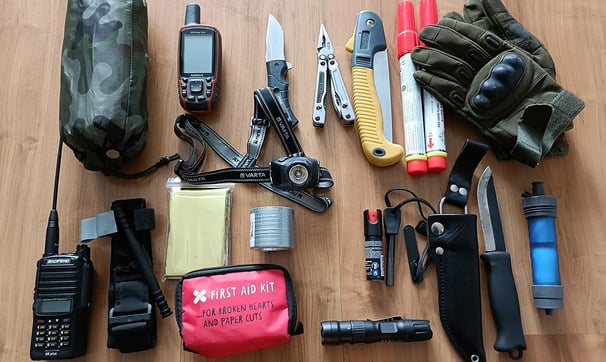Prepping on a Budget: Cost-Effective Solutions for Preparedness
PREPPINGEDUCATION


In an unpredictable world, being prepared for emergencies and unforeseen circumstances is essential.
Prepping, short for preparedness, is a practice that helps individuals and families face challenges with confidence and resilience. While prepping often conjures images of expensive gear and stockpiled supplies, it is entirely possible to build a robust preparedness plan on a budget. In this blog post, we will explore cost-effective solutions for prepping, proving that anyone can enhance their readiness without breaking the bank.
Assess Your Needs
The first step in prepping on a budget is to identify your specific needs. Consider the natural disasters, power outages, or potential crises that are common in your region. Assess your family's requirements, including food, water, shelter, medical supplies, and communication tools. By understanding your unique situation, you can focus on essential items and avoid unnecessary spending.
Create a Budget
Like any financial endeavor, prepping should begin with a budget. Determine how much you can allocate to your preparedness plan each month. Even small contributions can accumulate over time and make a significant impact on your level of readiness. Sticking to a budget will also help you prioritize items based on their importance.
Stockpile Smartly
Building a well-stocked pantry is a vital aspect of prepping. While buying in bulk can be cost-effective, it's essential to be mindful of expiration dates and rotating items regularly. Opt for non-perishable foods, such as rice, beans, canned goods, and dried fruits, which offer excellent shelf life and nutritional value. Consider purchasing items during sales or using coupons to save even more.
Water Preparedness
Water is one of the most critical elements of survival. Instead of buying bottled water, invest in a high-quality water filter that can purify various water sources, making them safe to drink. Additionally, collect rainwater using barrels or containers to utilize nature's gift as a backup water supply.
DIY Projects
Get creative and try do-it-yourself (DIY) projects for your prepping needs. Make your own emergency candles using inexpensive materials or learn basic sewing skills to mend and create clothing items. YouTube tutorials and online resources are excellent sources of DIY ideas for preppers on a budget.
Thrift Shops and Garage Sales
Thrift stores and garage sales can be goldmines for preppers. You can find discounted camping gear, backpacks, clothing, and even tools that are essential for your preparedness kit. These places are also great for sourcing items like blankets, sleeping bags, and first-aid supplies at a fraction of the original cost.
Learn and Educate
Knowledge is one of the most valuable assets for preppers. Take advantage of free online resources, eBooks, and public libraries to educate yourself about survival skills, first aid, and emergency planning. Attend local workshops or join community groups focused on preparedness to exchange ideas and learn from experienced preppers.
Community Cooperation
Prepping doesn't have to be a solitary pursuit. Partner with friends, family, or neighbors to pool resources and split bulk purchases. Creating a network of like-minded individuals can provide support and security during challenging times.
Conclusion
Prepping on a budget is a practical and achievable goal. By assessing your needs, creating a budget, and making smart choices, you can build a cost-effective preparedness plan. Remember that prepping is not a one-time task; it requires ongoing effort and adaptability. The sense of security and self-reliance gained from prepping will not only benefit you financially but also provide peace of mind in the face of uncertainties. Start small, stay persistent, and watch your preparedness grow over time.
